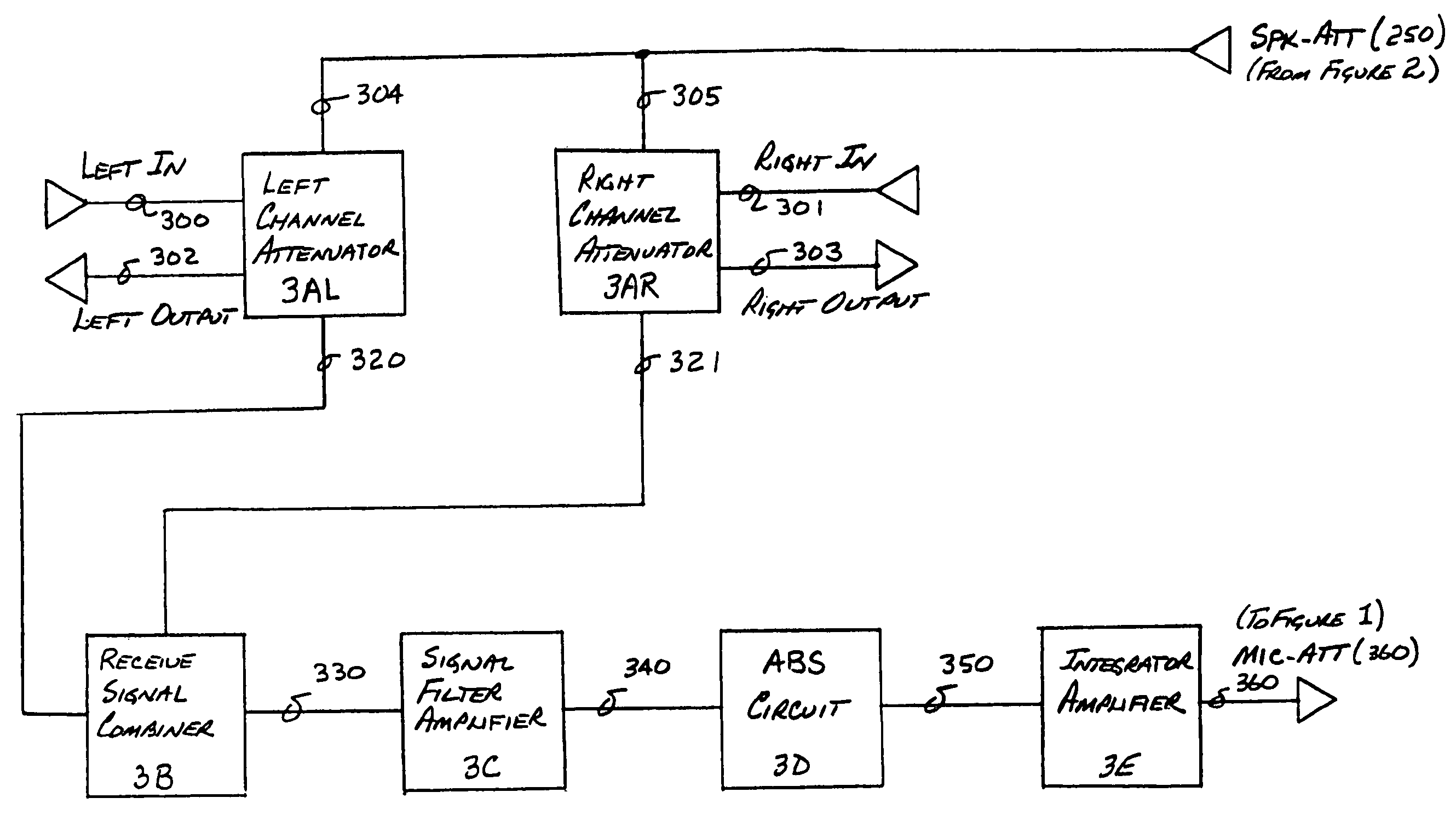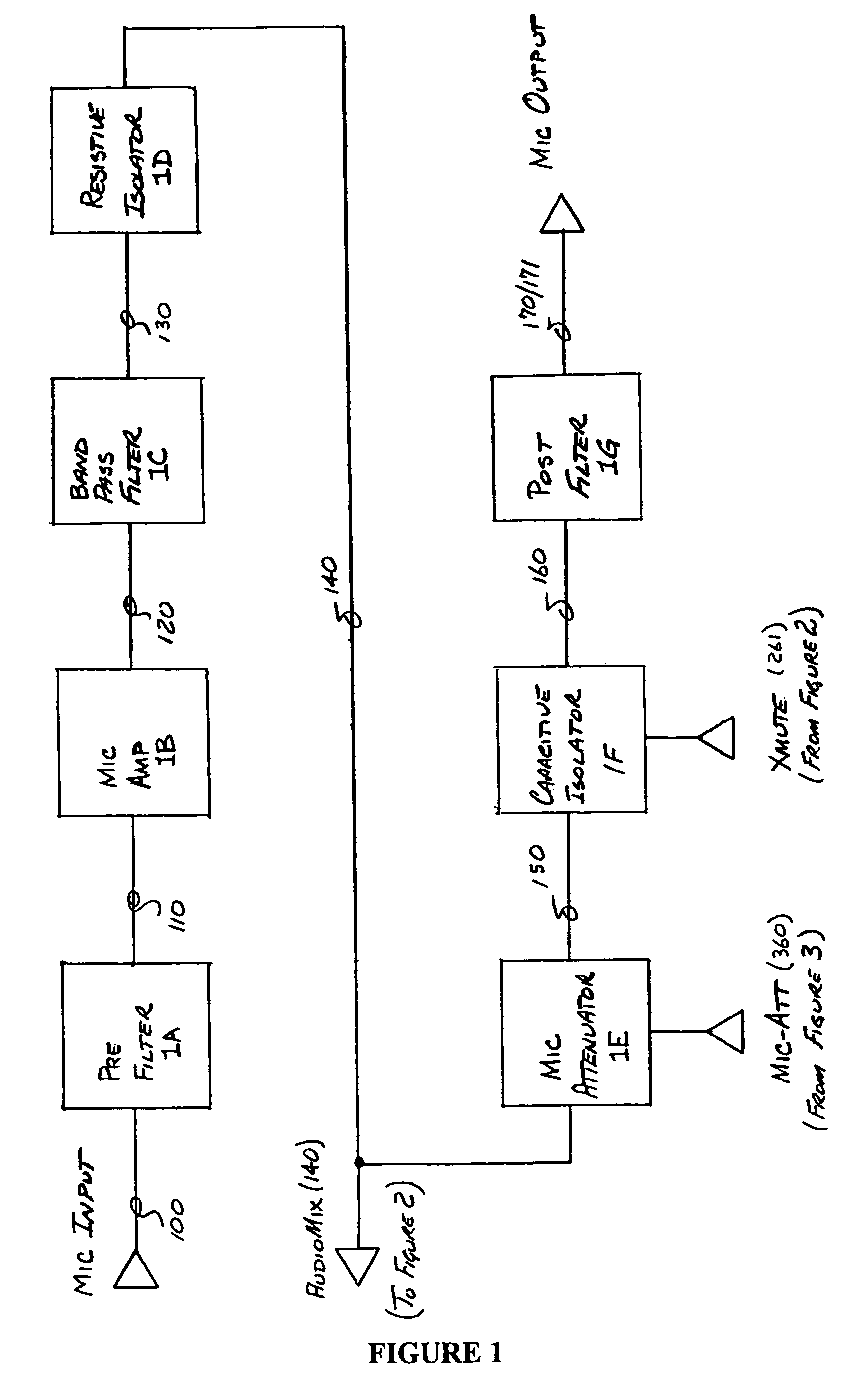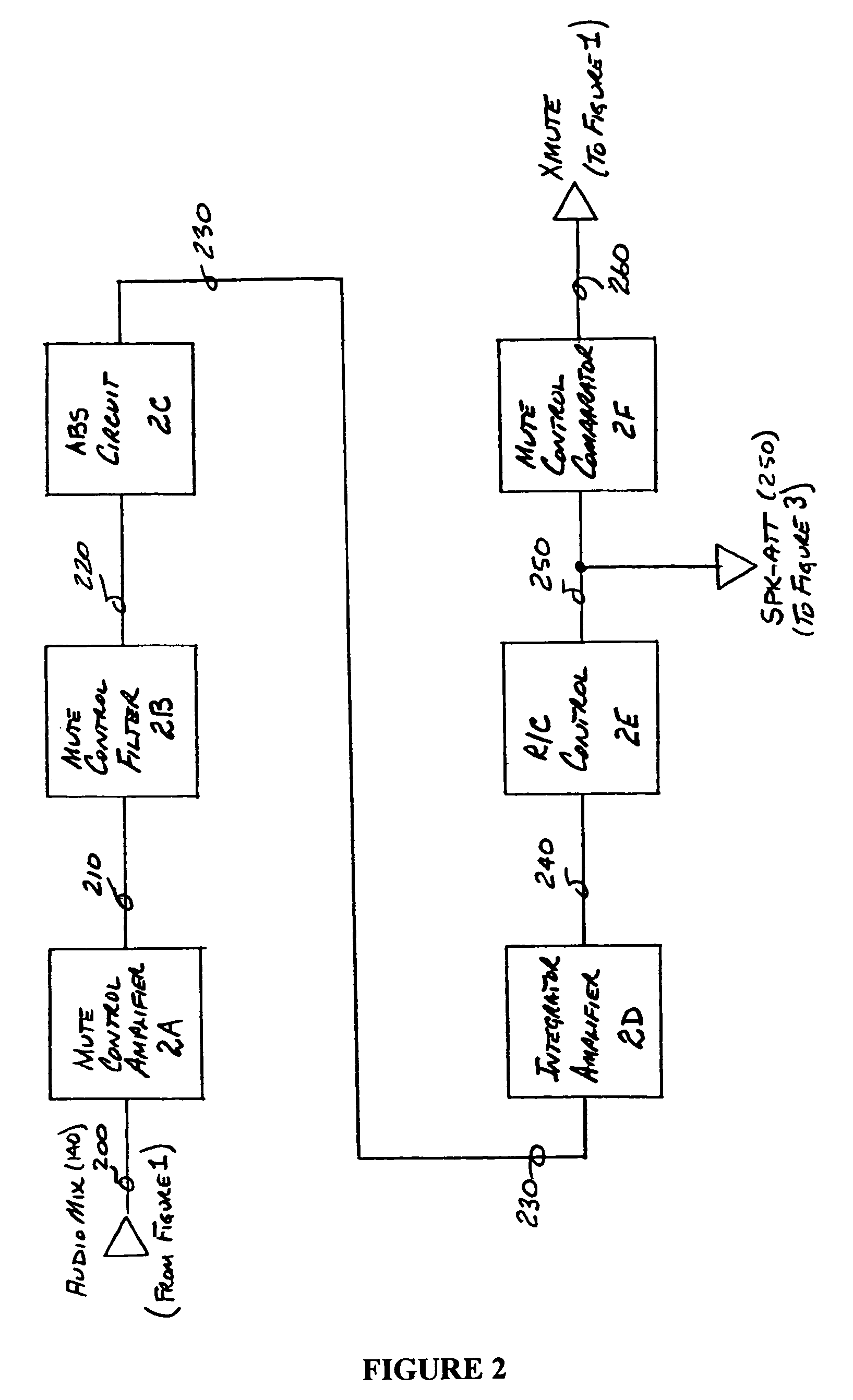Echo/noise canceling device for use with personal computers
a technology for personal computers and noise cancellation devices, which is applied in the direction of electrical transducers, substation equipment, instruments, etc., can solve the problems of prohibitive dsp technology, high price, and limited use of headphones by users, so as to reduce echo and regenerative feedback, reduce the effect of general household background noise, and increase the effective digital communication bandwidth
- Summary
- Abstract
- Description
- Claims
- Application Information
AI Technical Summary
Benefits of technology
Problems solved by technology
Method used
Image
Examples
Embodiment Construction
[0023]FIG. 1 is a block diagram illustrating the Transmit Section of the device. Beginning with the Microphone Input Port the microphone signal 100 is applied to Pre-Filter, 1A. (The microphone input jack is shown in FIG. 4, and only one channel is used. It should be noted that both left and right channels may be combined through a proper resistive network.) The Pre-Filter, 1A, has a band-pass filter response with the preferred center frequency of 2.3 kilohertz with −3 dB points at 287 hertz and 19.28 kilohertz, although the values may vary by plus / minus 20 percent. The filter response curve can be seen in FIG. 6. The signal then continues on path 110 to Microphone Amplifier, 1B.
[0024]The Microphone Amplifier, 1B, has an AC signal gain of approximately 32.6 dB producing signal 120. The output signal, 120, enters a Second Order Band-pass Filter, 1C, having a preferred center frequency of 638 hertz with −3 dB cutoff points at 281 hertz and 1.5 kilohertz, although the values may vary b...
PUM
 Login to View More
Login to View More Abstract
Description
Claims
Application Information
 Login to View More
Login to View More - R&D
- Intellectual Property
- Life Sciences
- Materials
- Tech Scout
- Unparalleled Data Quality
- Higher Quality Content
- 60% Fewer Hallucinations
Browse by: Latest US Patents, China's latest patents, Technical Efficacy Thesaurus, Application Domain, Technology Topic, Popular Technical Reports.
© 2025 PatSnap. All rights reserved.Legal|Privacy policy|Modern Slavery Act Transparency Statement|Sitemap|About US| Contact US: help@patsnap.com



